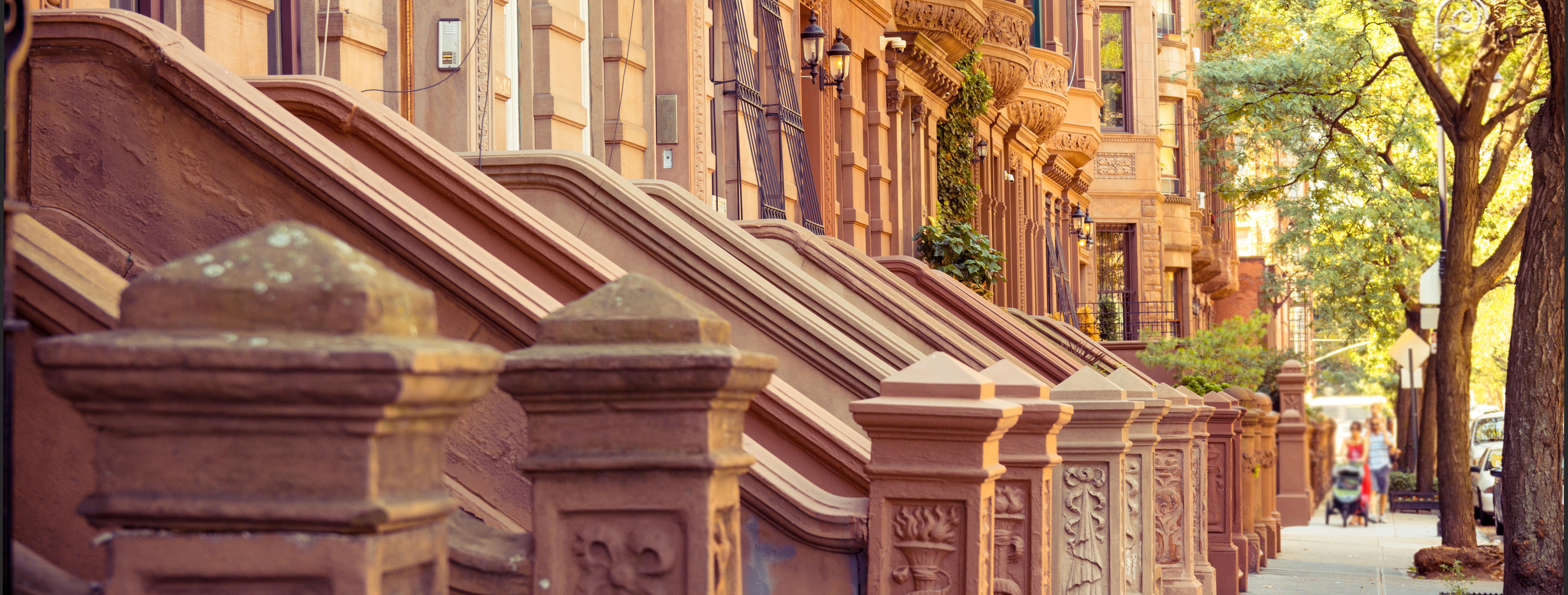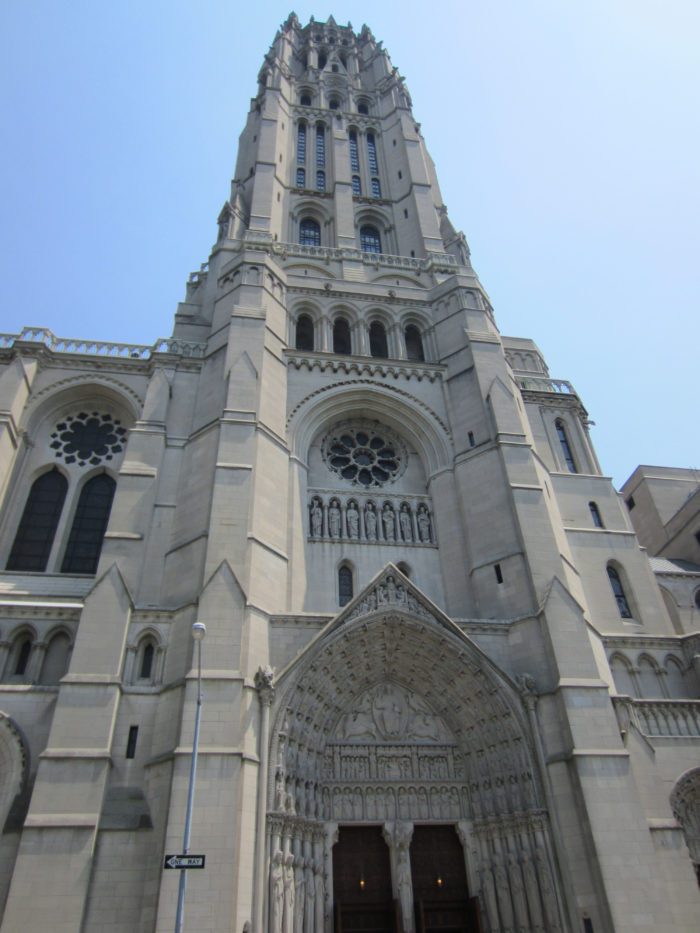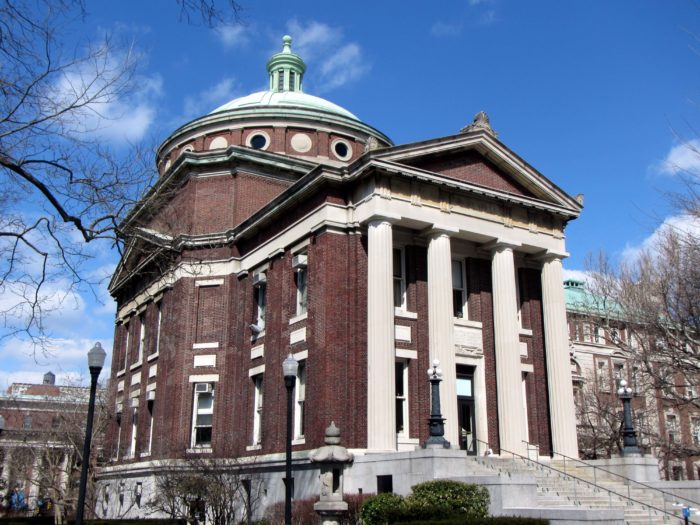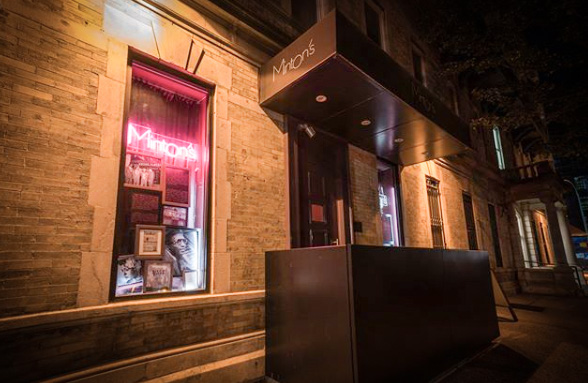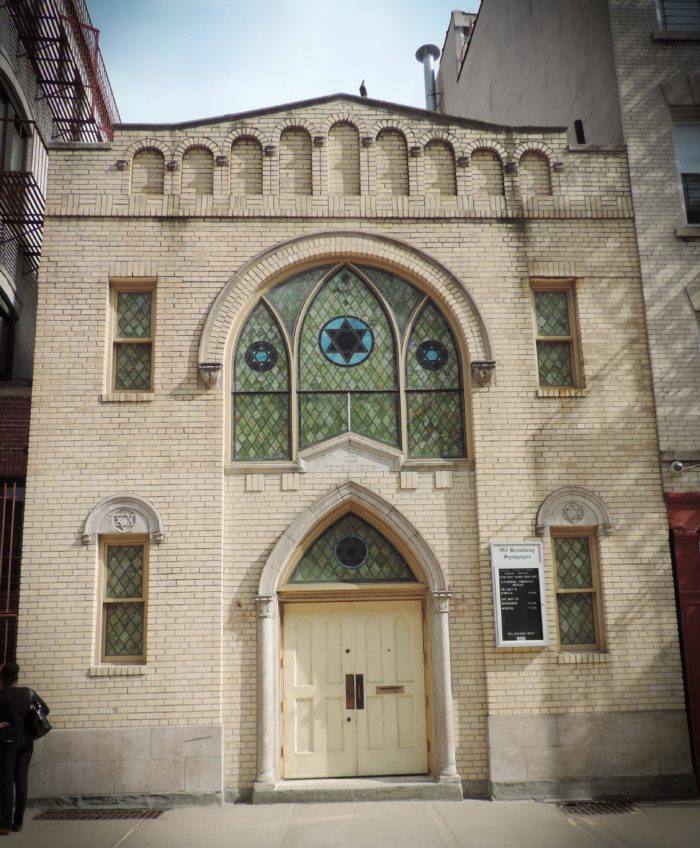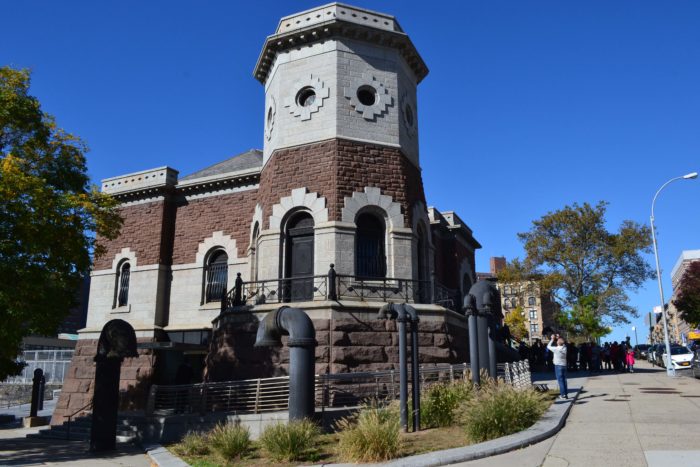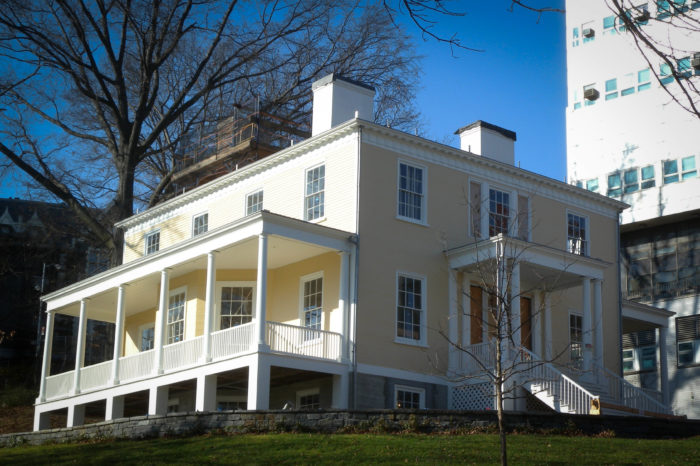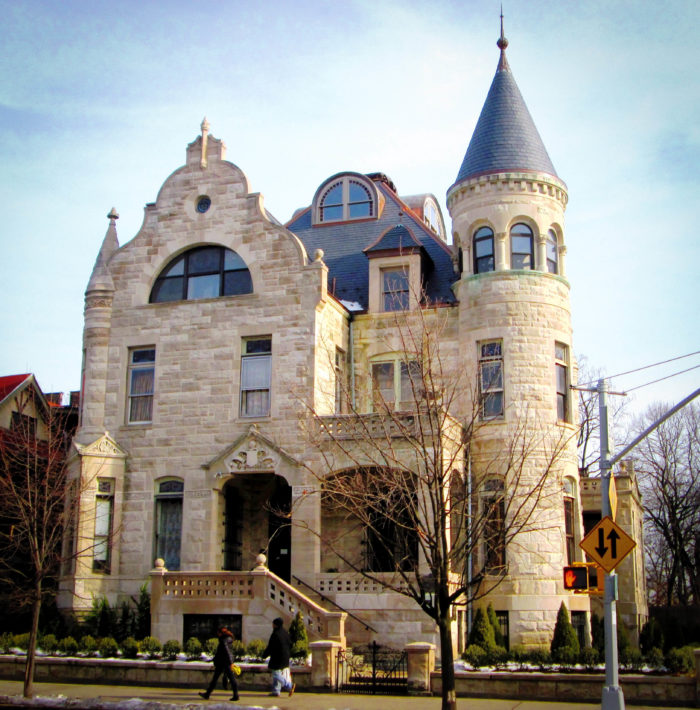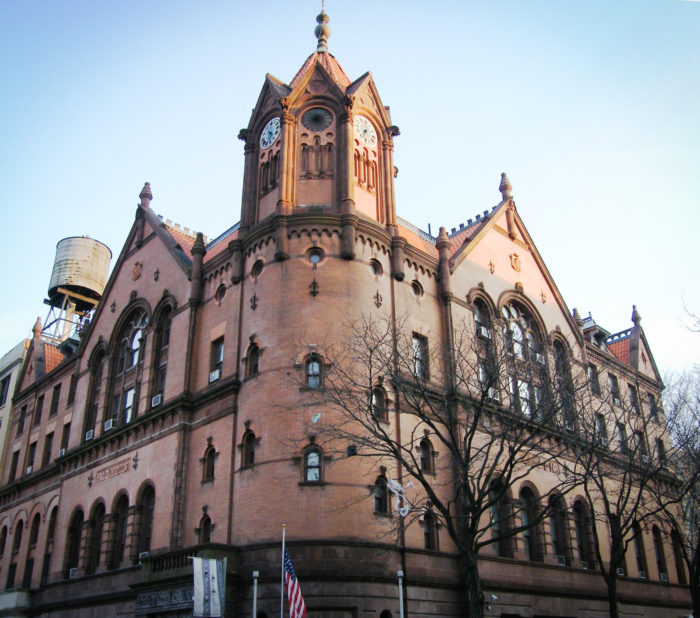Harlem Highlights of the National Register of Historic Places
As befits a neighborhood that has long been at the foreground of cultural innovation and social activism, Harlem has several dozen locations listed on the National Register of Historic Places. While each site on the list was deemed worthy of preservation, they are not all beauty spots—the 116th Street and 145th Street subway stations being prime examples. Below are our picks for places on the register that are as aesthetically pleasing as they are historically significant.
Riverside Church
490 Riverside Drive (at West 120th Street)
Riverside Church is impossible to miss. The tallest church in the country, it includes a 22-story-high tower and is located on one of the highest points of the city. Completed in 1930, it was modeled after the 13th-century Gothic cathedral in Chartres, France. It boasts stained-glass windows originally installed in a 16th-century cathedral in Bruges, Belgium, along with an ornate nave that can seat 2,000 people. Among the numerous expected carvings of saints and gargoyles are statues of scientific figures from Galileo to Albert Einstein. More than just breathtakingly beautiful, the interdenominational church earned its place on the National Register for its decades of social activism and advocacy. Its first pastor, Henry Emerson Fosdick, advocated the teaching of evolution in schools and helped promote Alcoholics Anonymous; William Sloane Coffin, who was named a senior minister in 1977, was controversial for his support of gay rights and nuclear disarmament. Martin Luther King Jr. declaimed against the Vietnam War here, one year to the day before his murder; Rev. Jesse Jackson eulogized barrier-breaking athlete Jackie Robinson here in 1972; Kofi Annan, while secretary-general of the United Nations, spoke here following 9/11.
Earl Hall
2980 Broadway (between West 116th and West 120th Streets)
Columbia University, in the Morningside Heights section of Harlem, has six buildings on the National Register of Historic Places. Earl Hall, whose offices include that of the university chaplain, made the list in 2018 for housing the country’s first LGBT organization—the Student Homophile League, now the Columbia Queer Alliance—in 1966. What’s more, the city’s first gay dances open to the general public were held in Earl Hall in 1970. In addition to its historic significance, the building is a standout for its Beaux-Arts elegance. Like much of the campus, it was designed by the renowned architectural firm McKim, Mead & White. Completed in 1902, it is fronted by four two-story Doric columns and topped with a copper dome.
206 West 118th Street (between Adam Clayton Powell Jr. Boulevard and St. Nicholas Avenue)
This jazz club claims to be “the place where bebop was born,” and apparently the team behind National Register agrees. The first black delegate to Local 802 of the American Federation of Musicians, tenor saxophonist Henry Minton opened the club in 1938 on the first floor of the Cecil Hotel. At the time, the union fined members who played in jam sessions; thanks to Minton’s influence, the federation turned a blind eye to musicians who participated in his club’s late-night sessions—and it was the freewheeling nature of these jam sessions, with their encouragement of improvisation, that gave rise to bebop. Thelonius Monk was a member of the club’s house band during the 1940s; Louis Armstrong, Art Blakey, Miles Davis, Duke Ellington, Ella Fitzgerald, Dizzy Gillespie, Earl Hines, Charles Mingus, Charlie Parker, and Max Roach were just a few of the seminal musicians who played at Minton’s, sometimes coming to jam at the club immediately after their paid performances at the Apollo Theater. Minton’s remained a jazz hot spot for several decades, closing in 1974 after a. fire shut down the hotel. The club, lavishly refurbished, reopened in 2013 and again hosts live performances just about every night.
Old Broadway Synagogue
15 Old Broadway (between Martin Luther King Jr. Boulevard and West 126th Street)
Built in 1923 to house the Chevra Talmud Torah Anshei Marovi congregation, Old Broadway Synagogue harks back to when Jewish immigrants from Russia and Poland made up a significant portion of Harlem’s population. Located on the block-long Old Broadway (a remnant of Bloomingdale Road, which had once been a main artery through Upper Manhattan), the two-story temple has a Moorish facade of off-white brick punctuated by stained-glass windows, and its snug interior features a tin-tile ceiling. Despite the changes in the neighborhood’s demographics, the shul still serves an Orthodox Jewish congregation.
Croton Aqueduct Gate House
135th Street and Convent Avenue
Today this structure is better known as the Harlem Stage Gatehouse, home of the titular performing-arts organization. But more than a century before it hosted dance, music, and theater performances, the gatehouse was key to regulating the supply of clean water from Westchester County’s Croton Aqueduct to Manhattan. Built in 1884, the Romanesque Revival structure resembles a miniature fortress, thanks to its octagonal tower, parapet, and dramatically framed window and door arches. A year after its 1983 addition to the National Register of Historic Places, the gatehouse was decommissioned. More than two decades later, however, the building was refurbished as a performance center for Harlem Stage, which named a new program responsible for commissioning and producing works WaterWorks in homage to the building’s past. Among the works performed in the Gatehouse’s 2006 inaugural season were “Chapel Chapter” by the Bill T. Jones/Arnie Zane Dance Company and Roger Guenveur Smith’s one-man show, “Who Killed Bob Marley?”
Hamilton Grange National Memorial
414 West 141st Street (between St. Nicholas and Convent Avenues)
The Grange was Alexander Hamilton’s last home. Designed by John McComb Jr., the architect responsible for Gracie Mansion, it was completed in 1802, just two years before Hamilton’s fatal duel with Aaron Burr. Though the two-story Federalist-style building has been carefully restored to look similar to how it did during Hamilton’s residency, it is not located on its original site. The Grange was built at what is now West 143rd Street near Convent Avenue. When the congregation of St. Luke’s Episcopal Church bought the building out of foreclosure in 1889, it moved the structure several blocks, to what became 287 Convent Avenue, between West 141st and West 142nd Streets, to prevent it from being razed as part of the expansion of the Manhattan street grid. The building was moved another two blocks, to its current location in St. Nicholas Park, in 2008. The landscaping around the relocated Grange replicated much of Hamilton’s original garden, including the inclusion of 13 sweet gum trees to symbolize the 13 colonies.
James Bailey House
10 St. Nicholas Place (at 150th Street)
James Bailey is not as well known as Alexander Hamilton, but his house was appreciably grander. The circus impresario, who joined forces with P.T. Barnum to create the Barnum & Bailey Circus, had this Romanesque Revival mansion completed for him in 1888. The three-story limestone building spans more than 8,000 square feet, replete with spires, a tower, gables, balconies, hand-carved wood paneling, and 66 windows—some of them stained glass. Bailey and his wife lived in the house for only six years before selling it in 1904, two years before his death. The house changed hands several more times before serving as a funeral home through the second half of the 20th century. In 2009 it was purchased again, by an anonymous couple who are said to be restoring its interior to its former glory.
Harlem Courthouse
170 East 121 Street (at Sylvan Place)
Another example of Romanesque Revival grandeur, the Harlem Courthouse was completed in 1893. Its five-story corner tower features an impressive eight gables and a bronze spire; its interior includes marble mosaic floors, a double-height courtroom with a vaulted ceiling, and the mural “Exploitation of Labor and Hoarding of Wealth,” painted by David Karfunkle in 1936 as part of the New Deal’s Federal Art Project. The building was designed to serve as a municipal courthouse and holding cells; today it is home to the Harlem Community Justice Center, which handles housing disputes and offers assistance for parolees, among other programs.


